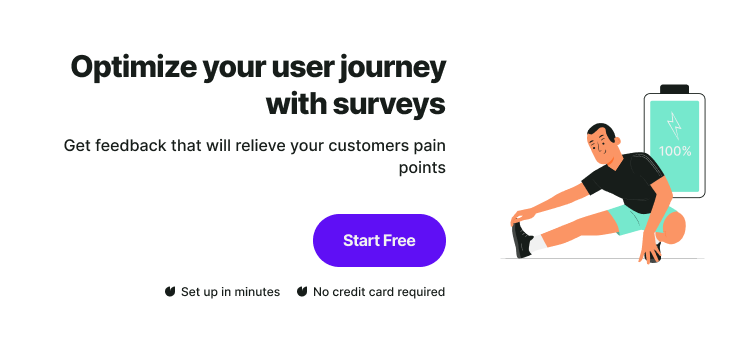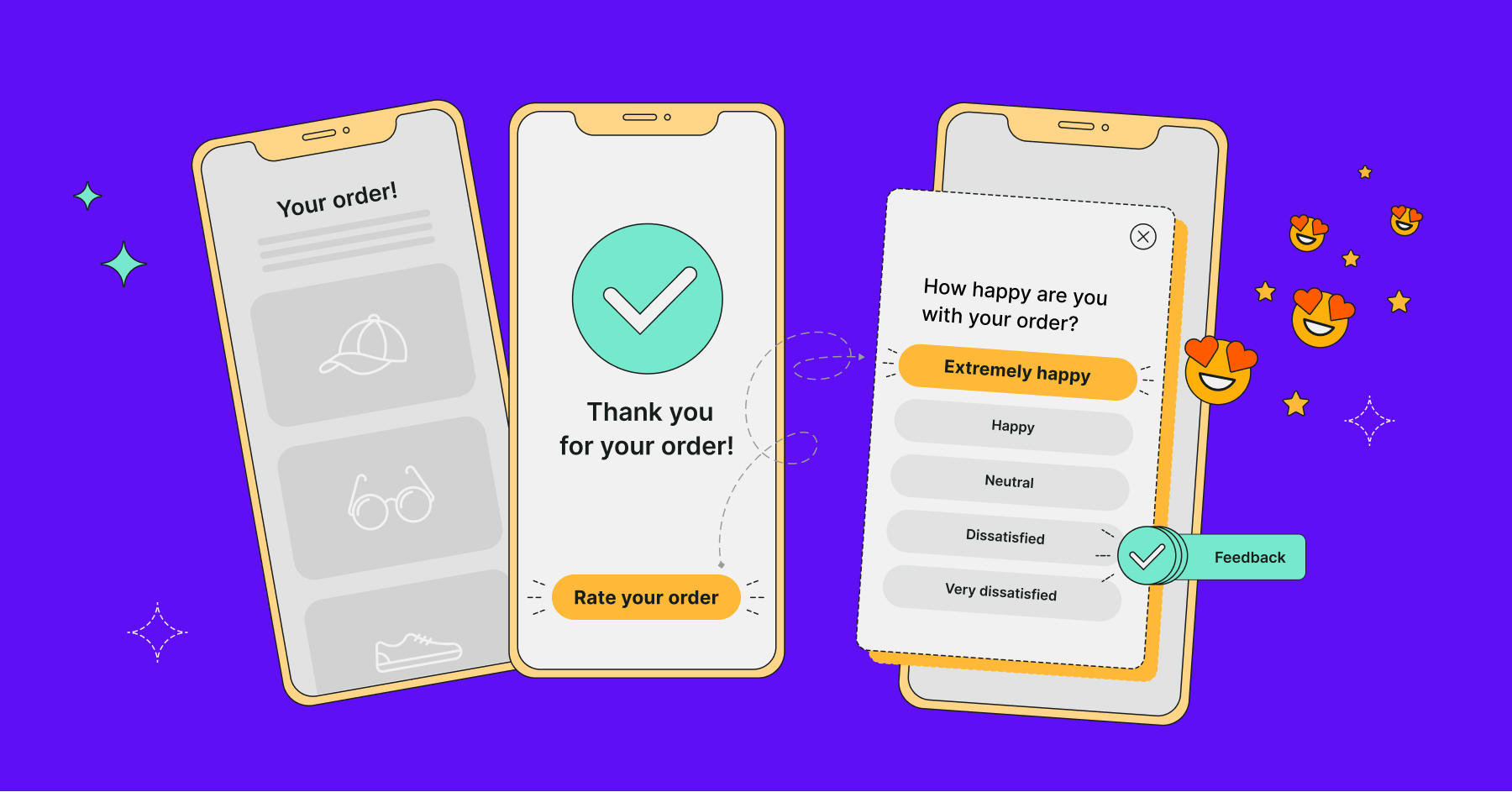Just like great ingredients are the basis for preparing an amazing meal, a great survey needs to have amazing questions. And unless you know the recipe by heart, choosing effective survey questions can be difficult. One of the most common choices you can make are qualitative survey questions.
They let you uncover deep insights with qualitative research, but they do come with some challenges. In this article, we’ll show you how to write great qualitative questions, what makes them good (and bad) choices for your qualitative surveys, as well as some examples to get you inspired.

Qualitative vs. quantitative questions
Before we go any further, we need to make a distinction between qualitative and quantitative survey questions.
Qualitative questions help you get qualitative data. These are the questions that get behind the why, what, and how of a particular subject through qualitative research of your focus groups. An example of a qualitative question would be: Please describe your recent experience with our customer support.
Use qualitative research questions when you need customers to explain their experience in their own words and provide you with deeper insights.
Quantitative questions help you collect quantitative, numerical data. They help you put a numerical value on your customers’ feedback. An example of a quantitative question would be: “On a scale from 1 to 10, please rate your satisfaction with your recent experience with our customer support?”
Use quantitative research questions when you need data that is easy to analyze and quantify so that you can make an important decision based on data.
Both question types have their pros and cons, and depending on your needs, you’ll want to use one or the other or a combination of both research methods on your target audience.
How to write good qualitative survey questions
Qualitative survey questions can unearth impressive data. However, you need to be very careful about how you write them to get the best feedback from your focus groups. Here are some quick tips to get started.
Make the qualitative research questions specific
The first rule is very simple. A qualitative question leaves your audience with a space to write anything they want. And the truth is, they will literally write anything if you don’t point them in the right direction.
If your survey questions are too broad, they will result in broad answers and feedback that is not particularly useful. For example, asking “How do you like our dashboard?” is going to give you a wide range of answers.
Instead, ask something along the lines of “What do you think of the different visualization styles in our reporting dashboard?”
The more specific the survey questions, the better the feedback.
Have a clear purpose
Why are you asking a certain question? In the case of quantitative surveys, you don’t always need a specific reason, e.g. checking up on your NPS score.
However, qualitative questions demand lengthier answers and you need to motivate your target audience to provide that answer. The best way to do so? Just let them know why you’re asking.
For example, you could say that you’re asking about the checkout process in order to make it quicker to purchase and easier to choose a preferred payment method. The stronger the benefit for the customer, the more reasons for stating the purpose of the survey.
Focus on quality, not numbers
You won’t get the same number of answers with qualitative questions compared to quantitative ones such as CSAT surveys. Put simply, writing out an answer takes more time than selecting a number on a scale.
You may be tempted to simplify your survey questions to get more answers from your survey participants. However, try and resist the temptation.
Your aim is to get amazing feedback so don’t shy away from asking the survey questions that really interest you. Five good answers are much better than 50 superficial ones you can’t use.
Add subquestions when necessary
Sometimes, you can’t get all the info you need from one answer. If you want to ensure you get all the feedback you need, asking a subquestion makes sense.
For example, you could ask customers about their thoughts on a new feature you launched. A subquestion could be one where you ask the customers what would make them use that feature more.
You can actually ask this question in a matter of seconds by using this survey template:
Your customers are willing to provide feedback to help you out, but you sometimes need to nudge them in the right direction.
Pros and cons of using qualitative questions for surveys
Qualitative survey questions can yield amazing results. However, they have their good and bad sides, and you need to be aware of both before creating your next survey.
Advantages of using qualitative questions in surveys
Let’s start with the good stuff.
They help you get in-depth data
A quantitative question tells you how likely someone is to recommend you on a scale. While a number is a good piece of info, a few sentences describing why and how they would recommend you will provide the context. If you want in-depth data where customers describe how they feel about you in more detail, you need qualitative research questions.
They are more flexible by nature
The typical quantitative question has a standard form. Survey types such as CSAT, NPS, and CES have question formats that don’t vary much. On the other hand, the sky is the limit with qualitative research questions. You can phrase them in any way you want, using specific expressions to narrow down the type of feedback you want to get.
They encourage discussion
There is little that can happen once an NPS survey is complete. You get the results, analyze them (in minutes, thanks to Survicate’s dashboard), and the conversation is over. Qualitative research questions encourage your customers to speak their minds and share how they feel.
Disadvantages of using qualitative survey questions
There are some downsides to keep in mind with this question type.
The sample size
Qualitative data is amazing when it comes to the insights that you get. But on the flip side, it requires detailed analysis, and you have to manually go through all the survey responses to find the gold nuggets in your feedback. As a result, the sample is usually much smaller than in quantitative surveys, and you have to use focus groups with limited respondent numbers.
Sample bias
With the smaller size sample usually comes the sample bias. This means that you’ll tend to pick customers who are similar in some way, including demographics, use cases, location, and your data might be skewed.
Lack of privacy
Lots of data is always a great thing for businesses, but there may be some concerns from the customers’ end.
If they give you detailed answers, you can accurately pinpoint the identity of the customer who supplied the answer. You can solve a part of the problem by making the survey anonymous, but bear in mind that some customers will be concerned about privacy issues regardless.
Difficulty with statistical analysis
Imagine 500 respondents filled in your NPS survey. You could get your NPS score within seconds using survey software like Survicate. On the other hand, getting qualitative research results from a focus group with 500 people could take weeks. Be prepared to set aside some time to go through the responses to your qualitative surveys manually.
Qualitative question examples
Here are some amazing qualitative question examples to get you inspired. You can adapt these to a specific use case depending on your industry and niche.
Exploratory questions
The most common of the qualitative research questions, the exploratory question aims to just… explore. You ask your survey participants about a particular topic so you can learn more about their thoughts, experiences, and attitudes.
Examples:
- Describe the last interaction you had with our product.
- Does our product meet your overall expectations?
- What is the most valuable feature in our product?
- Why did you choose to use our product compared to the competitors?
- What is the one aspect of our product that you never use?
- What is your biggest objection to our checkout process and why?
Predictive questions
Predictive survey questions put survey participants in a certain situation. Based on past events, you ask them to predict what would happen in a hypothetical situation. If you phrase the questions correctly, they can provide a wealth of feedback about the respondents’ pain points and your product.
Examples:
- If we added free returns on all orders above $50, would you shop more with us?
- If you could add one more feature to our product, what would that feature be and why?
- If we had a Zapier integration for our app, how often would you use it?
- If you were in charge of our customer support for a day, what would you change and why?
- Would you be more likely to buy our product if it was endorsed by a large company such as Microsoft?
Get ready for deep insights with qualitative questions in your surveys
Not everyone is born a great writer or a qualitative research expert. But nowadays, you don’t have to be either of those things to write amazing qualitative questions and have great qualitative surveys.
Survey software has come a long way and nowadays, it does more than just provide a platform for creating and distributing online surveys. Survicate comes with 125+ survey templates out of the box, packed with quantitative and qualitative questions, ready to use.
Kickstart your qualitative research today by choosing the right tool for the job. Try Survicate and see why online surveys are the future of conducting qualitative research.

.webp)






.svg)
.svg)
.svg)

.svg)


.svg)







.svg)




.svg)

















.svg)






























.svg)

.svg)
.svg)

.svg)



.svg)







.svg)

.svg)



.png)
.jpg)



